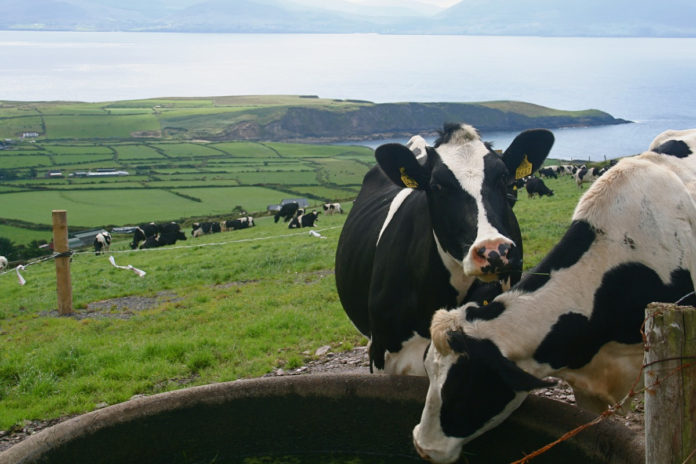Christopher Breen, Dairy Advisor for CAFRE, has published a set of management notes for farmers in June 2020.
His advice is as follows:
Slurry and fertiliser for second cut silage
The online CAFRE Crop Nutrient Calculator is useful for working out slurry and fertiliser requirements for second cut silage.
At soil index 2 for phosphate and index 1 for potassium (potash), typical indices of fields with a history of being cut for silage, slurry has the potential to provide some of the nitrogen and potash (K) and all of the phosphate.
An application of 22 cubic metres of dairy cow slurry per hectare (2,000 gallons per acre) and 375 kg (three bags per acre) of a 22:0:10 type fertiliser can meet second cut requirements at these indexes.
To ensure better silage fermentation and to minimise sward damage spread slurry evenly, preferably using a low emission spreading technique.
Growing low potash silage for dry cows
There are health advantages to producing a silage specifically for dry cows. Aim for a low K grass at cutting as high K silages are associated with metabolic disorders and subsequent poor milk yields in early lactation cows.
If you didn’t set aside an area for this in the first cut, prepare an area of the second cut for dry cow silage.
Fields previously cut for silage should not receive slurry again. An application of 315 kg per hectare (2.5 bags per acre) of CAN fertiliser (27:0:0) is enough to grow a low K silage for dry cows.
Bale silage is also suitable for feeding to dry cows. Leave cutting until early August as stem development coincides with a fall in grass K levels. To avoid mould growth or mycotoxins the harvested grass dry matter should not rise above 35% before baling.
It takes seven hectares to produce enough bales to feed 100 cows in the last four weeks of the dry period. Store the bales separately and use only for dry cow feeding.
Water for cows at grass
Water for cows at grass is extremely important with 100 cows drinking 6,500 litres daily. On days where temperatures are above 20oC this figure can double.
Troughs should be large enough so that 10% of the herd can drink at any one time, with 30-50% water intake occurring within one hour of milking.
Troughs in the centre of paddocks with fast flow valves and large bore pipes ensure cows have easy access to water.
Clean troughs regularly as cows are very sensitive to smell and will not drink dirty water.
Condition scoring late lactation cows
Cows calved last autumn are over 200 days in milk and should be condition scored any time now. Aim to have them at condition score 2.75 at calving. They should be about condition score 2.5 at the moment. Assess fat cover over the loin, pelvis and tail area:
- Loin – there should be a slight depression along the cow’s top line and loin. The shelf at the end of her transverse processes and flank should be filling.
- Pelvis – there should be a good cover of tissue developing on the plates.
- Tail area – there should be a good cover of tissue over the pin bones and the cavity at the tail head should be filling.
If you have cows that have not yet reached this stage, are under conditioned and well past 200 days in milk, increase their dry matter intake. Feed 1.0-3.0 kg per day of a low protein supplement, for example, rolled barley.
June jobs checklist
- Maintain sward quality, graze swards down and top swards containing dead grass or seed heads.
- Think about dry cow winter diets now so that low potash silage can be made.
- If operating under a nitrates derogation, ensure any slurry spread after 15th June is applied using a low emission technique such as a trailing shoe or dribble bar.
- Calibrate parlour and out of parlour feeders to ensure accurate feeding.
- Carry out spraying if conditions are suitable and docks/weeds are at the correct stage for control. Your local Basis trained agronomist can advise on the best product and timing to achieve good control.
- Always read the product label and comply with the grazing and harvest intervals. These are minimum intervals and longer intervals of up to 21 days, if possible, between spraying and cutting or grazing will improve weed control.





